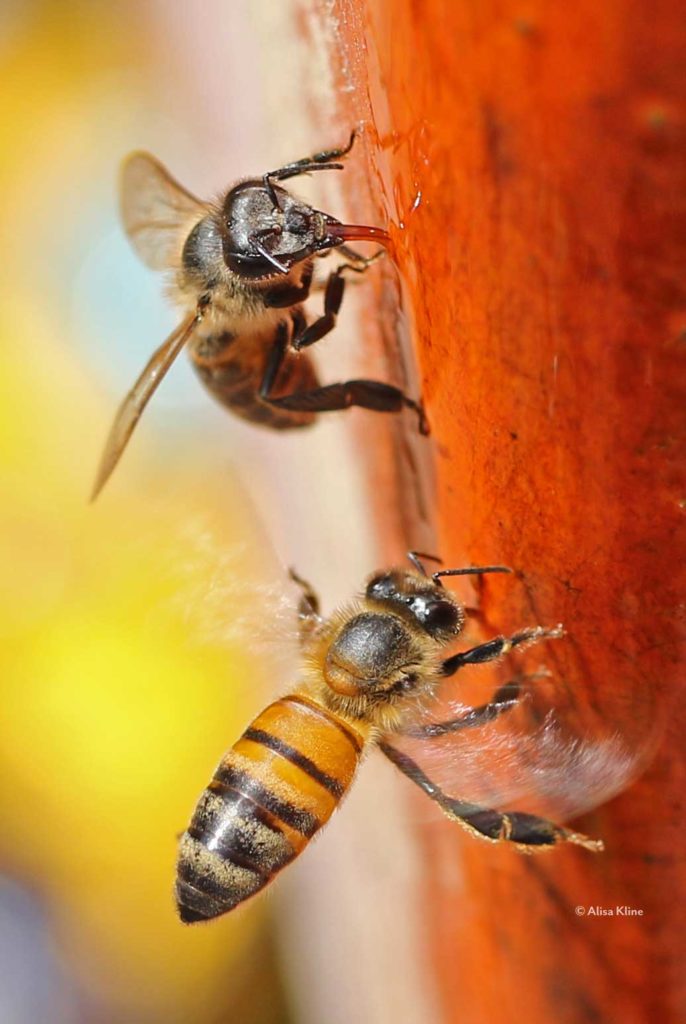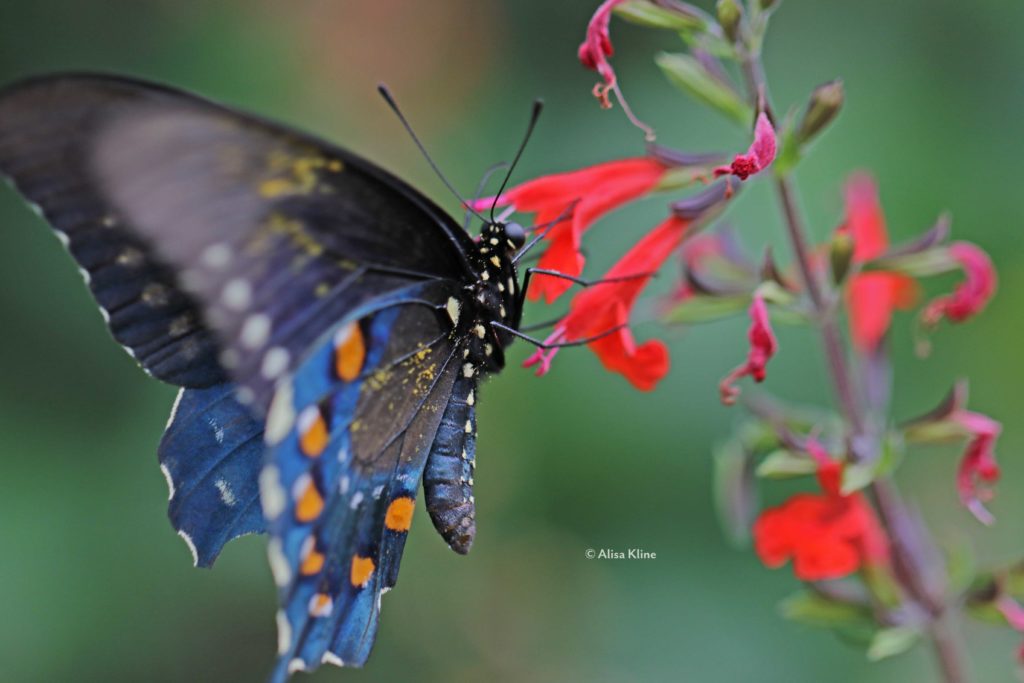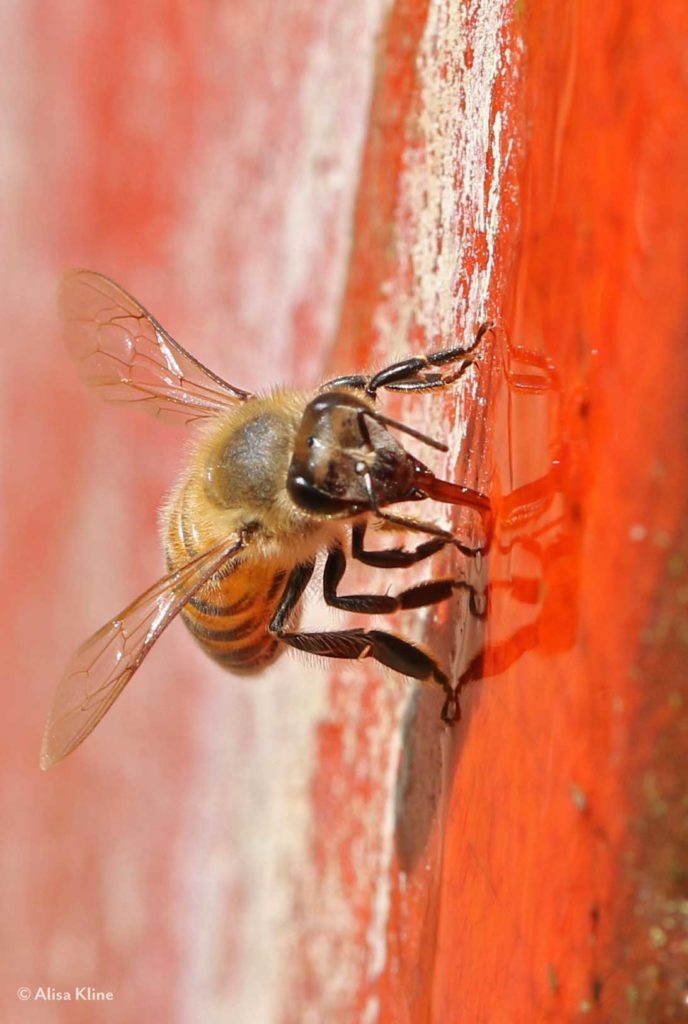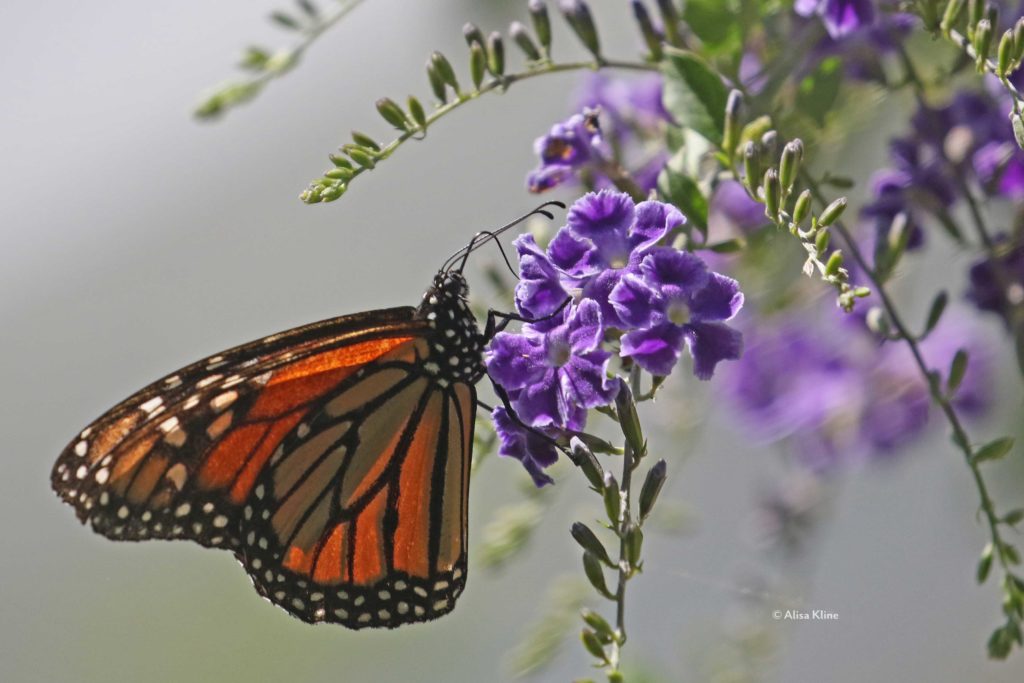Drinking. So very much drinking.
 Honey bees collect water. They don’t consume it. They convey it. The hive needs water to thin honey and manipulate pollen. But perhaps the most important, they need water for the evaporative cooling that keeps the hive at an acceptable temperature during our long Houston summers.
Honey bees collect water. They don’t consume it. They convey it. The hive needs water to thin honey and manipulate pollen. But perhaps the most important, they need water for the evaporative cooling that keeps the hive at an acceptable temperature during our long Houston summers.
There are bees who specialize in nothing but water collecting. That’s what the bees above are doing. They are filling their crops with water which they will carry back to their hive. Other bees take the water and spread droplets around the hive, paying particular attention to the honeycomb. Bees then gather in groups and vibrate their wings at a very high rate to speed up evaporation and thus cool the hive.
I came to learn all this because when it is hot, bunches of honeybees cling to an overflowing-vessel type fountain here on the preserve. The magic lens that lets us see small things, captured multiple photos of bee tongues, and that was all it took. Much research ensued.
Based only on my observations, I thought that the bees’ drinking was passive. After all, those tongues don’t move, they just stick onto the side of the fountain. As a result, I wasted a considerable amount of time learning about capillary action, which is not primarily what’s going on but it’s fascinating, so I’m going to introduce the concept of a sidebar.
Capillary action sidebar
When you are tiny, you are subject to minuscule forces that we, in our massive states, barely perceive. Surface tension? I suppose that we can sort of feel the initial resistance when we push our finger into a glass of water. But imagine being so tiny that surface tension is strong enough to let you walk across water.
Bees can’t walk across water, even they are too large, but surface tension is a real force. It exists because molecules of water want to stay together. They do not want to be pushed apart. Water also wants to climb some surfaces. This force is called adhesion. Dip a paper towel into a puddle and watch the water climb up the towel. You thought of it as the towel absorbing the water. But it’s the water that’s doing all the work. What the towel is doing is providing adhesive surfaces for the water to climb.
Take these two forces, surface tension and adhesion, together and you get water that will climb up a small tube on its own. Adhesion gets the water to start climbing a surface and surface tension means all the other molecules will follow the leader until the force of gravity overcomes the flimsy structure and limits the height that water can achieve through capillary action alone.
Capillary action plays a role in an insect’s uptake of liquids, but often not the biggest one.
Back to drinking (whoopee!)
Insects seem to have two basic approach to drinking (which in the case of nectar sippers, is how they eat). One approach to this is the basic suck. Stick straw into liquid, use suction to draw the liquid upwards and voila. You have drunk nectar. Butterflies are suckers. Capillary action probably also plays a role, but butterflies are able to expand their abdomen to produce a suck.

Pipevine swallowtail butterfly sticks her straw deep into a salvia blossom and takes a sip.
The other basic approach is lapping. Your dog laps water. So do bees. Of course, it’s not the same at all. But this method of drinking is called lapping, so it’s not my fault it’s very, very different from your dog.
The bee’s tongue is hairy. Think mop. It sticks this hairy tongue into a liquid and then ruffles the hairs in a wave that drags through the liquid, capturing some of it (likely through adhesion), and then snapping the tongue back in to strip the collected liquid. A single lap will take about 400 milliseconds so don’t expect to notice it.

Sidebar for speculation
What I just wrote above is exactly what I found in the scientific literature on bee drinking. So that’s what happens. Except I saw something different. I took 80 photos of bees on the fountain in approximately three minutes. The camera will capture multiple images in a burst. In all eighty images, every single one shows the tongue stuck out and steady. The photos were taken at speeds ranging from 120 milliseconds to 1/10th of a millisecond. In other words, if they retracted those tongues, I would have caught it.
All the literature I found on honey bee lapping was looking at nectar gathering. I couldn’t find nearly as much on water gathering. Perhaps bees tank up on water differently. That’s what these bees look like. They pull up to the filling station, stick out their tongues and stay there for multiple seconds, often not flying until shoved off by a new bee bellying up to the bar.
Among the possible explanations I have considered is (see above) capillary action, coordinated tongue-hair manipulation, the force of the running water itself loading up the bees. Most seem to orient to face the flow.
And jarringly, back to the text
Leaving aside for the moment water uptake, nectar drinkers have two very different methods, lapping and sucking. This difference gives plants an opportunity to pick their pollinator.
What! You mean plants are not simply the background against which more interesting animals can be observed? As if. Plants are master manipulators. They can’t move from place to place, so they have to inspire the more mobile among us to do their bidding.
I am not talking about individual agency among plants (not that I couldn’t). I’m talking about natural selection, through which, entire species plot and plan.
Plants need insects (or whoever) to visit and move pollen around so that plants can reproduce. To entice the pollinators within range, they offer food. In this case, sugar water. The great bulk of flowering plants use this exact strategy.
Creating sugar has an energy cost for the plant. Simple cost/benefit analysis would suggest that the best concentration of sugar in nectar would be whatever gets the most pollination for the least energy. Except that many species of plant offer much more sugar than the plant next to them and both seem to thrive. They have optimized themselves for different pollinators. That way, they are not competing with each other. They are specializing.

This monarch is sipping nectar through her straw.
The amount of sugar concentration in nectar affects more than how many calories it contains. When you add sugar to a mixture, it thickens. Think syrup vs juice. If you are the type of insect who sucks up nectar, you are going to have trouble if you run into syrup. Have you ever tried to suck syrup through a tiny straw? Lots of luck. For suckers, that plant isn’t worth the effort involved. Suckers are looking for thinner nectar. But if you are a lapping bee, you hit the jackpot. Syrup is easy to lap and each lap gets more sugar than that thin juice dispenser over there. Bees will prefer the syrup.
Once the plant has limited its pollinators to only sippers or only lappers, it can get to work making modifications that get even more of their pollen spread around by flapping butterflies or buzzing bees.

